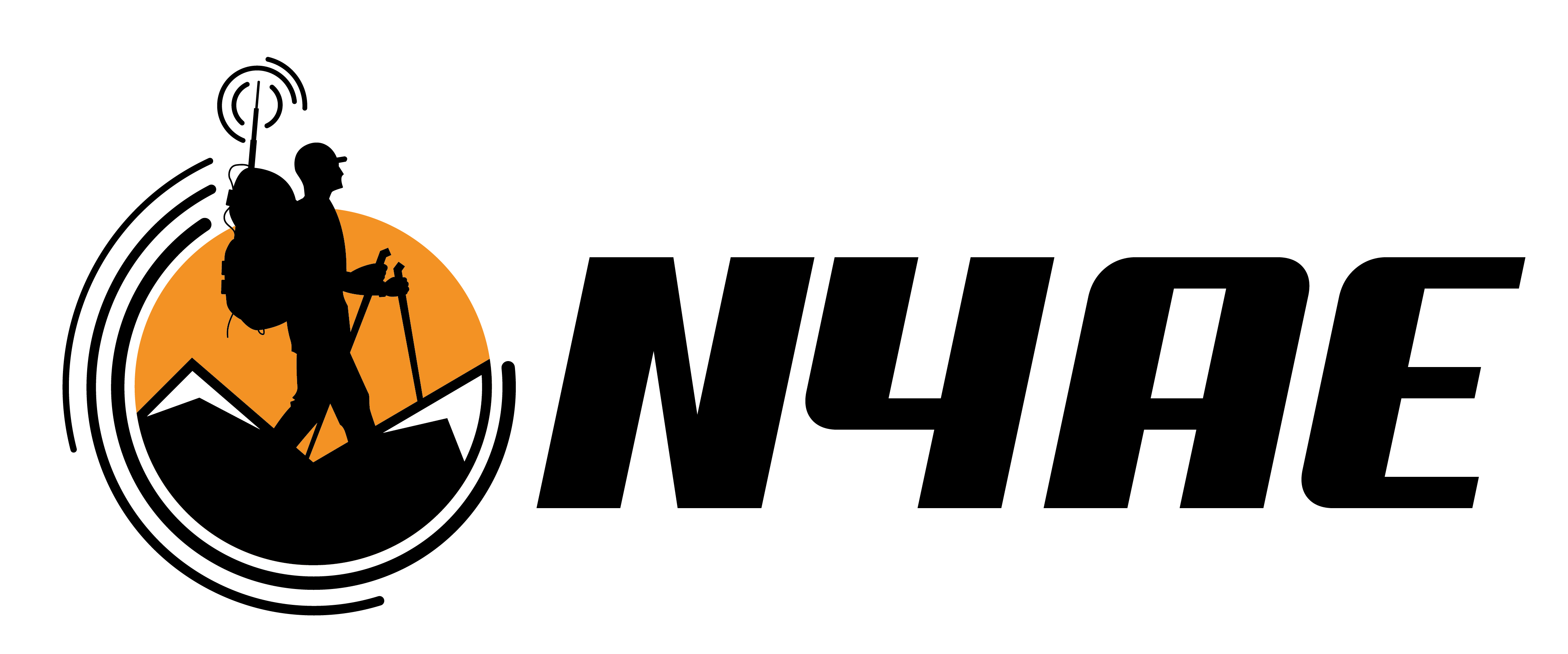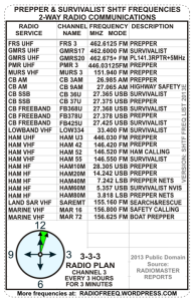Why Preppers Should Have a General Class Ham License
A trend among Preppers and Survivalists is to use amateur radio to communicate during a crisis. Given ham radio’s rich history of service during disasters, it’s a natural place for people to go when they want to prepare for the unexpected.
There are lots of articles encouraging people to get their license. And that is great. I think that the Prepper movement, and the proliferation of inexpensive Chinese hand-held radios, has contributed to the growth of licensees in the United States, especially with the entry-level Technician Class license being the most common.
If you’re studying for your Technician, go on and earn the General Class license.
Here’s why.
When you search for “Prepper Radio Frequency List,” you’ll run into this list that covers GMRS, CB, Ham, and even Marine Maritime and Search and Rescue. This list is meant to be a standardized “watering hole” for Preppers during a crisis. (I hope that you have licenses for all these services and can transmit legally, but that is a different topic.)
The ham radio section includes four HF frequencies used by the American Preparedness Radio Network (TAPRN), a group of preppers who meet on the air regularly to communicate and share information. But there is a problem.
If you don’t have a General Class Ham License, you can’t participate.
TAPRN frequencies are in the voice section of the HF band. You must have a General Class license or above to transmit there and participate.
- 3.818 MHz
- 5.357 MHz
- 7.242 MHz
- 14.242 MHz
Also, every state has a state-wide communication net for emergencies. Most are located in the voice section of the 80-meter or 40-meter band. Again, you must have a General Class license to transmit and participate.
If all you want to do is communicate locally, the Technician is fine. You have local repeater coverage until a storm knocks out power. At that point, you’re no better off than if you had a bubble pack FRS radio from Wal-Mart.
With a General Class license, you can communicate locally or across the world. International Relief Agencies, the military, and ships at sea use shortwave to keep in touch. If it’s good enough for them during a disaster, it’s probably good enough for most Prepper scenarios.





















Hello Brian, it also the general amateur radio license but that of the civil protection and expired a while I never renovated to keep as a souvenir, use only the general, because of the message on my e-mail, a soon to IK2TGW
While the tech license does give you 10m, that band is pretty much worthless. It’s either open or it’s not. And it not by far most of the time.
Actually, many repeaters have backup power (solar, battery, etc.) available on them, but not all of them do.
I do, however agree with the general premise of the article. If you’re a Technician, go ahead & study a little bit more and get your General. It opens up a lot more HF frequencies for you than just the 10 meter 28.300-28.500 MHz (SSB voice; as a Technician, you still have CW privileges on 80m, 4m and 15m and CW or digital privileges on 10m between 28.000-28.300 MHz.)
That “4m” should have been “40m”
I am not a proponent of VHF/UHF repeaters during a genuine emergency or disaster.
And the ones that do have backup power will go down quickly from overuse
We actually were able to run one of our local repeaters on solar/battery backup (intentionally) for just over 48 hours, Jeff before we ‘turned it back on (commercial power); it had been being used fairly heavily in that time, too. Have no idea as to how long it might have gone before either shutting down or breaking down had we let it keep going.
Actually if you are a technician class you still have access to the 10 meter HF band. In addition, a VHF radio that is capable of operating single side band (SSB) or CW (for morse code)will give you further range. And don’t forget all of the digital modes and satellite operations that are available to all classes except novice class.
73 DE KC9NRB
Bryan, yes, you are correct. And thanks for the comment.
The point of my article is that many of the frequencies promoted by the Prepper Community as a place to go during a crisis are out of reach for Technicians.
Preppers aren’t promoting 10 meters, nor are they using VHF CW.
Brian, there is a way that a Technician (or non-licensed member) can participate in the TAPRN nets: get with a member who has a General or higher class and then they (the General/Extra) can be their Control Operator. The only drawback to that would be that the Technician/non-licensee would have to operate under the General’s (or Extra’s) callsign during the Net as a ‘3rd party’ caller and the C.O. would have to log it as such.
Kind of defeats the concept of self-reliance, don’t you think? Just upgrade to General. Boom. Done.
I should have added, “during ‘normal’ operating times” to that previous reply. Obviously, 3rd Party might not be allowed during an actual emergency situation, AFAIK.
While you’re basically correct, Bryan, not everyone (Preppers included) has the means (read: money) to be able to afford a VHF HT or mobile radio capable of CW and/or SSB ops; most are FM-only (but not all).
10 meters, at least in this area of the Southwest (AZ), is basically “dead” in the summertime (but not always) until around September.
Also, as long as you’re with a General or Extra Class licensee – and they have to be physically near the radio, you’re operating under THEIR license (and call), even if you have ‘only’ a Technician Class; you’re basically operating as an ‘unlicensed’ operator at that point and on their bands. You (obviously) can’t use your OWN call unless you’re within the Technician portion of 10 meters (28.300-28.500 MHz for voice and 28.000-28.300 MHz for digital/CW).
Smart!